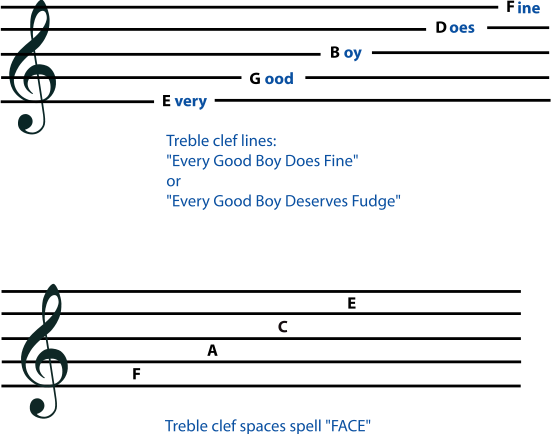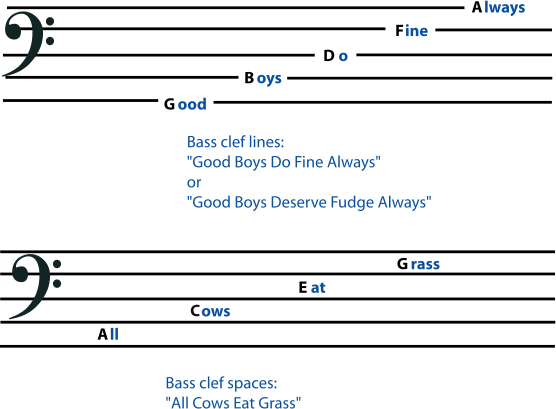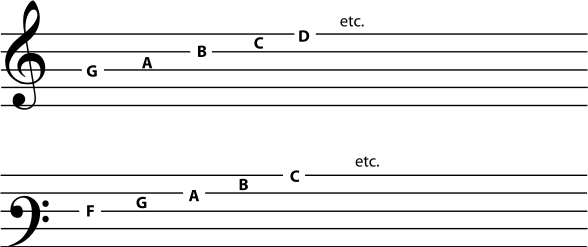Memorizing the Notes in Bass and Treble Clef
One of the first steps in learning to read music in a
particular clef is memorizing where the notes are. Many students prefer to
memorize the notes and spaces separately. Here are some of the most popular
mnemonics used.


You can use a word or silly sentence to help you memorize which
notes belong on the lines or spaces of a clef. If you don't like these ones,
you can make up your own.
Moveable Clefs
Most music these days is written in either bass clef or
treble clef, but some music is written in a C clef. The C clef is moveable: whatever
line it centers on is a middle C.

All of the notes on this staff are middle C.
The bass and treble clefs were also once moveable, but it is
now very rare to see them anywhere but in their standard positions. If you do
see a treble or bass clef symbol in an unusual place, remember: treble clef is
a G clef; its spiral curls around a G. Bass clef is an F clef; its two dots center
around an F.


It is rare these days to see the G and F clefs in these
nonstandard positions.
Much more common is the use of a treble clef that is meant
to be read one octave below the written pitch. Since many people are
uncomfortable reading bass clef, someone writing music that is meant to sound
in the region of the bass clef may decide to write it in the treble clef so
that it is easy to read. A very small "8" at the bottom of the treble
clef symbol means that the notes should sound one octave lower than they are
written.


Comments
Post a Comment